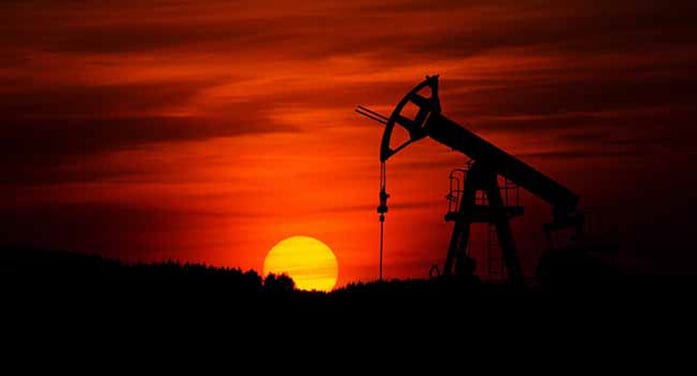 Led by kingpin Saudi Arabia, oil-producing nations are gaining confidence and delivering a message: the oil era is far from over.
Led by kingpin Saudi Arabia, oil-producing nations are gaining confidence and delivering a message: the oil era is far from over.
Last week, Saudi Petroleum Minister Prince Abdulaziz bin Salman warned that global oil production could drop by a massive 30 million barrels per day (bpd) by 2030. That’s around 30 per cent of the daily global oil supply and about the same share of current global oil demand.
Without any significant drop in global demand, this drop in production could be disastrous.
“We’re heading toward a phase that could be dangerous if there’s not enough spending on energy,” the prince said last week. Lack of sufficient investment in the industry could lead to an “energy crisis,” Bloomberg quoted him as saying.
“We have very serious concerns that the world could run short of energy if we are not careful in managing the transition,” Saudi Finance Minister Mohammed Al-Jadaan said. He joined the growing chorus reiterating recent warnings from other Saudi officials and industry executives, including Saudi Aramco chief executive Amin Nasser.
Pundits and industry players are echoing these sentiments.
The sector isn’t investing enough to meet the growing global energy demand, including for crude oil. That could lead to a series of energy crunches, Daniel Yergin of IHS Markit told CNBC last month.
| RELATED CONTENT |
| More world oil and gas investment desperately needed, report warns By Deborah Jaremko |
| Weak oil and gas investment still plagues Canada By Mark Milke and Lennie Kaplan |
| Why some oil and gas investment was doomed regardless of COVID-19 By Ian Madsen |
The industry is “massively underinvesting” in supply to meet growing demand, said Greg Hill, president of U.S. oil producer Hess Corp.
And Saudi Arabia alone can’t supply the rise in oil production needed to avoid a crunch, respected analyst Julian Lee wrote in a recent opinion piece on Bloomberg.
Upstream oil and gas investment must rise to pre-pandemic levels of around US$525 billion per year through the end of the decade so the industry can ensure a demand-supply balance, Saudi Arabia-based International Energy Forum (IEF) reported recently.
Upstream investment has been depressed for a second year in a row and is estimated at around US$341 billion. Global annual upstream spending needs to go up by as much as 54 per cent to US$542 billion if the oil market is to avert the next supply shortage shock, Moody’s said in October.
Current trends aren’t encouraging.
Global oil and gas discoveries in 2021 are expected to hit their lowest full-year level in 75 years, Rystad Energy reported early in December.
As of the end of November, total global discovered volumes this year are calculated at 4.7 billion barrels of oil equivalent (boe) and, with no major finds announced so far this month, the industry is on course for its worst discoveries toll since 1946. This would represent a considerable drop from the 12.5 billion boe unearthed in 2020.
Due to the lack of new exploration leases, almost all of Russia’s crude oil will soon be difficult to recover, emphasized Russian Energy Minister Alexander Novak. The difficulties extracting the oil will also mean higher production costs.
Oil output in Canada, the world’s fourth-largest producer, is expected to climb over the next decade and peak at 5.8 million barrels per day in 2032, seven years sooner than previously forecast, the Canada Energy Regulator (CER) said a couple of weeks back.
While set to increase production in 2022, U.S. shale oil is likely done with the massive two-million-bpd annual output surge we saw just before the pandemic hit, Tsvetana Paraskova said in a piece in Oilprice.com.
So the overall picture isn’t positive. The emphasis on broadly increasing investment is growing, and this need comes despite the Saudi plan to raise oil production capacity to 13 million bpd by 2027 from 12 million bpd now.
The Abu Dhabi National Oil Co. (ADNOC) also plans to raise the United Arab Emirates production capacity by one million bpd by the end of this decade, to five million bpd from four million now.
Iran and Iraq also plan to increase their output.
Still, this may not be enough, considering that some major international oil companies are pivoting to more investments in low-carbon energy. Some – such as BP and Shell – have even said their oil production has already peaked, Paraskova emphasized.
And to be fair, the world’s spare capacity is almost exclusively concentrated in the Middle East, a region prone to geopolitical tensions and conflicts.
Investment bank Goldman Sachs says oil could hit US$100 a barrel as demand rises to new highs over the next couple of years.
So the industry has entered an interesting phase as opposing forces continue to push and pull global energy dynamics.
Toronto-based Rashid Husain Syed is a respected energy and political analyst, and the Middle East is his area of focus. As well as writing for major local and global newspapers, Rashid is also a regular speaker at major international conferences. He has been asked to provide his perspective on global energy issues by both the Department of Energy in Washington and the International Energy Agency in Paris. For interview requests, click here.
The opinions expressed by our columnists and contributors are theirs alone and do not inherently or expressly reflect the views of our publication.
© Troy Media
Troy Media is an editorial content provider to media outlets and its own hosted community news outlets across Canada.

